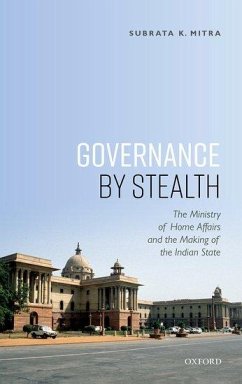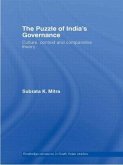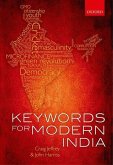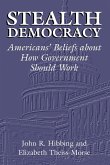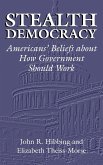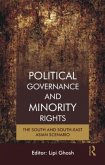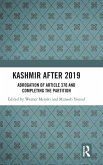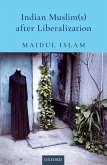- Gebundenes Buch
- Merkliste
- Auf die Merkliste
- Bewerten Bewerten
- Teilen
- Produkt teilen
- Produkterinnerung
- Produkterinnerung
The first full length study of India's Ministry of Home Affairs
Andere Kunden interessierten sich auch für
![The Puzzle of India's Governance The Puzzle of India's Governance]() Subrata K MitraThe Puzzle of India's Governance179,99 €
Subrata K MitraThe Puzzle of India's Governance179,99 €![Keywords for Modern India Keywords for Modern India]() Craig JeffreyKeywords for Modern India125,99 €
Craig JeffreyKeywords for Modern India125,99 €![Stealth Democracy Stealth Democracy]() John R. HibbingStealth Democracy24,99 €
John R. HibbingStealth Democracy24,99 €![Stealth Democracy Stealth Democracy]() John R. HibbingStealth Democracy78,99 €
John R. HibbingStealth Democracy78,99 €![Political Governance and Minority Rights Political Governance and Minority Rights]() Lipi Ghosh (Hrsg.)Political Governance and Minority Rights114,99 €
Lipi Ghosh (Hrsg.)Political Governance and Minority Rights114,99 €![Kashmir After 2019 Kashmir After 2019]() Kashmir After 2019188,99 €
Kashmir After 2019188,99 €![Indian Muslim(s) After Liberalization Indian Muslim(s) After Liberalization]() Maidul IslamIndian Muslim(s) After Liberalization55,99 €
Maidul IslamIndian Muslim(s) After Liberalization55,99 €-
-
-
The first full length study of India's Ministry of Home Affairs
Hinweis: Dieser Artikel kann nur an eine deutsche Lieferadresse ausgeliefert werden.
Hinweis: Dieser Artikel kann nur an eine deutsche Lieferadresse ausgeliefert werden.
Produktdetails
- Produktdetails
- Verlag: Oxford University Press
- Seitenzahl: 472
- Erscheinungstermin: 2. Februar 2022
- Englisch
- Abmessung: 224mm x 152mm x 33mm
- Gewicht: 612g
- ISBN-13: 9780199460489
- ISBN-10: 0199460485
- Artikelnr.: 61400018
- Herstellerkennzeichnung
- Libri GmbH
- Europaallee 1
- 36244 Bad Hersfeld
- gpsr@libri.de
- Verlag: Oxford University Press
- Seitenzahl: 472
- Erscheinungstermin: 2. Februar 2022
- Englisch
- Abmessung: 224mm x 152mm x 33mm
- Gewicht: 612g
- ISBN-13: 9780199460489
- ISBN-10: 0199460485
- Artikelnr.: 61400018
- Herstellerkennzeichnung
- Libri GmbH
- Europaallee 1
- 36244 Bad Hersfeld
- gpsr@libri.de
Subrata K. Mitra is Emeritus Professor of Political Science, Heidelberg University, Germany.
* Chapter One
* Governance by stealth, and, the making of India's Home Ministry
* Home's distinctive character
* Is governance by stealth an elite conspiracy?
* Why India? Order-making as State Formation: the 'Missing Link'
* Raj to Swaraj: Poachers into gamekeepers
* Ministers and civil servants: the Janus-face of the Indian state
* Home: The 'charlady' of the government, and more
* Independence and the ordeal of post-colonial chaos
* Structure of the narrative
* Sources, and the method of analysis
* Contributions of the book and its limitations
* Chapter Two
* Governance as process: Colonial legacy, hybrid norms, and
institutional arrangement
* Colonial Order: Appropriation and re-use of Indian culture
* The Structure of colonial power and its orderly unravelling
* Norms of governance by stealth and the post-colonial challenge
* Post-colonial Democracy and a dynamic, neo-institutional model of
governance
* What holds India's political system together?
* Chapter Three
* The Sentinel of Order: Home - origin, evolution, functions and
structure
* Imperial rule and Home's functional niche
* Origin and evolution
* From Department to Ministry (1947)
* The functions and Structure of the Ministry (1948)
* The internal architecture of the Ministry: Allocation of Business
Rules (1961)
* Organization of the Ministry
* The 'new look' charlady: Home - balancing authority, accountability
and compliance
* Chapter Four
* Politicians, civil servants and post-colonial Governance: Continued
synergy, despite role reversal
* Regime Change, with seamless continuity
* The challenge of leadership: Synergy of ministers and secretaries
* Ministerial leadership
* Bureaucracy: the 'Old Faithful' of Indian politics
* Ministers and Secretaries: Conflicting loyalties?
* PM- HM- HS: An Incompatible triad?
* Chapter Five
* Home at work: Re-shaping public services and integrating national
territory
* Public Order and Public Services: dual challenges for the Home
Ministry
* The challenge of re-shaping the civil service
* Recasting the colonial civil service in a national mould
* Post-partition trauma, and building of an Indian nation
* Integration by stealth: Princely states and the dilemma of
Independence
* Junagarh
* Hyderabad
* Jammu and Kashmir State
* Generous in victory: Patel stoops to conquer!
* On to the 'promised land', with Home
* Chapter Six
* Setting the Mould: Home and the 1950s
* Setting the political agenda: The Congress 'system', Home Ministry
and the 1950s
* Public services
* Reorganisation of the Machinery of Government
* Nehru and Patel: a tense duopoly
* Home at work: creation of new, innovative institutions
* The 1950s' harvest: Embryonic norms and policy outcomes of the 'new'
politics
* The 1950s: Institutionalization of governance by stealth
* Chapter Seven
* Home, beyond the foundational decade: Manifest decline, resilient
frame
* 1960s and the beginning of governmental instability: Home under
pressure
* Self-portrait of the Ministry, 1960-61
* Indo-China border war, 1962: unintended consequences for the MHA
* The growing hiatus of politics and administration: facing the
uncertainty of the 1970s
* Special measures during emergency
* Revoking Emergency: Home, redux?
* The 1980s: A decade of 'deinstitutionalization'
* India's 1984: Home at its nadir
* Beyond the Foundational Decade: Home's complex trajectory
* Chapter Eight
* Holding the state together: The Ministry of Home Affairs and India's
'unity in diversity'
* The 'rational' politics of cultural nationalism and the danger of
'Balkanization'
* Surreptitious integration: Regulating public holidays
* Censorship
* Mediation in contesting claims over regional boundaries
* Engaging insurgency through peace initiatives
* Creation of sub-States
* 'Colonization' of Union Territories
* Institutional innovation: Reorganisation of JandK militia
* President's rule: MHA and Indian States
* Punjab: limited success, despite President's rule
* India's 'Unity in Diversity', with a little help from Home's silken
threads
* Chapter Nine
* Governing the sacred: Home and the quest for collective identity
* Sacred spaces and colonial power
* The Devaswom Board: A colonial innovation
* Religion, post-independence: fundamental right and fundamental cause
of political strife
* Home, and evolution of a national language policy
* Combatting 'Communalism' through the Project of 'National
Integration'
* After Ayodhya riot (1992), what kept Bhiwandi quiet?
* Accommodating regional and sectional identities within the modern
state
* Continuing relevance of language and religion as issues in Indian
politics
* Chapter Ten
* Ultima ratio regum: Force in the making of legitimacy
* The forceful state: Home's fire power
* The gathering and processing of intelligence
* Legitimate force? An Indian dilemma
* The 'Liberation' of Goa, 1961
* Force, bound by law
* Policing the police: Lessons of the PAC (UP) revolt, 1973
* Legitimate force? Democracy's conundrum
* Chapter Eleven
* Home stymied: The Emergency regime, 1975-77, and its aftermath
* Orderly rule, emergency and due process: A symbiotic triad
* Carl Schmitt: the role of the sovereign in an emergency
* The Political context of the Emergency
* The Janata Interlude (1977-79): Home and the middle ground between
orderly rule and anti-emergency zealotry
* Emergency as conundrum: Home's cruel dilemma
* Home: Orderly rule and the legacy of the 1970s
* Chapter Twelve
* When Home Fails: Compliance and Contestation in a post-colonial state
* Assessing compliance: Three analytic narratives
* Ayodhya: demolition of the Babri mosque
* Insurgency in Jammu and Kashmir
* Maoist movements (LWE)
* Norms of governance by stealth reconsidered
* -loss of elite consensus and its impact on compliance
* -High efficacy and low trust, and non-compliance
* Home on the mend
* Rupture of orderly rule in India: cumulative or diminishing?
* Conclusion
* The Reason of State: Governance by Stealth, and beyond
* Home at work
* The logic of appropriateness and grey areas of governance
* The reason of state and the ambiguity of power
* Liberal Politics in an illiberal context: Home's challenge
* Re-enchanting the state
* Still the 'steel frame'?
* Governance by stealth, and, the making of India's Home Ministry
* Home's distinctive character
* Is governance by stealth an elite conspiracy?
* Why India? Order-making as State Formation: the 'Missing Link'
* Raj to Swaraj: Poachers into gamekeepers
* Ministers and civil servants: the Janus-face of the Indian state
* Home: The 'charlady' of the government, and more
* Independence and the ordeal of post-colonial chaos
* Structure of the narrative
* Sources, and the method of analysis
* Contributions of the book and its limitations
* Chapter Two
* Governance as process: Colonial legacy, hybrid norms, and
institutional arrangement
* Colonial Order: Appropriation and re-use of Indian culture
* The Structure of colonial power and its orderly unravelling
* Norms of governance by stealth and the post-colonial challenge
* Post-colonial Democracy and a dynamic, neo-institutional model of
governance
* What holds India's political system together?
* Chapter Three
* The Sentinel of Order: Home - origin, evolution, functions and
structure
* Imperial rule and Home's functional niche
* Origin and evolution
* From Department to Ministry (1947)
* The functions and Structure of the Ministry (1948)
* The internal architecture of the Ministry: Allocation of Business
Rules (1961)
* Organization of the Ministry
* The 'new look' charlady: Home - balancing authority, accountability
and compliance
* Chapter Four
* Politicians, civil servants and post-colonial Governance: Continued
synergy, despite role reversal
* Regime Change, with seamless continuity
* The challenge of leadership: Synergy of ministers and secretaries
* Ministerial leadership
* Bureaucracy: the 'Old Faithful' of Indian politics
* Ministers and Secretaries: Conflicting loyalties?
* PM- HM- HS: An Incompatible triad?
* Chapter Five
* Home at work: Re-shaping public services and integrating national
territory
* Public Order and Public Services: dual challenges for the Home
Ministry
* The challenge of re-shaping the civil service
* Recasting the colonial civil service in a national mould
* Post-partition trauma, and building of an Indian nation
* Integration by stealth: Princely states and the dilemma of
Independence
* Junagarh
* Hyderabad
* Jammu and Kashmir State
* Generous in victory: Patel stoops to conquer!
* On to the 'promised land', with Home
* Chapter Six
* Setting the Mould: Home and the 1950s
* Setting the political agenda: The Congress 'system', Home Ministry
and the 1950s
* Public services
* Reorganisation of the Machinery of Government
* Nehru and Patel: a tense duopoly
* Home at work: creation of new, innovative institutions
* The 1950s' harvest: Embryonic norms and policy outcomes of the 'new'
politics
* The 1950s: Institutionalization of governance by stealth
* Chapter Seven
* Home, beyond the foundational decade: Manifest decline, resilient
frame
* 1960s and the beginning of governmental instability: Home under
pressure
* Self-portrait of the Ministry, 1960-61
* Indo-China border war, 1962: unintended consequences for the MHA
* The growing hiatus of politics and administration: facing the
uncertainty of the 1970s
* Special measures during emergency
* Revoking Emergency: Home, redux?
* The 1980s: A decade of 'deinstitutionalization'
* India's 1984: Home at its nadir
* Beyond the Foundational Decade: Home's complex trajectory
* Chapter Eight
* Holding the state together: The Ministry of Home Affairs and India's
'unity in diversity'
* The 'rational' politics of cultural nationalism and the danger of
'Balkanization'
* Surreptitious integration: Regulating public holidays
* Censorship
* Mediation in contesting claims over regional boundaries
* Engaging insurgency through peace initiatives
* Creation of sub-States
* 'Colonization' of Union Territories
* Institutional innovation: Reorganisation of JandK militia
* President's rule: MHA and Indian States
* Punjab: limited success, despite President's rule
* India's 'Unity in Diversity', with a little help from Home's silken
threads
* Chapter Nine
* Governing the sacred: Home and the quest for collective identity
* Sacred spaces and colonial power
* The Devaswom Board: A colonial innovation
* Religion, post-independence: fundamental right and fundamental cause
of political strife
* Home, and evolution of a national language policy
* Combatting 'Communalism' through the Project of 'National
Integration'
* After Ayodhya riot (1992), what kept Bhiwandi quiet?
* Accommodating regional and sectional identities within the modern
state
* Continuing relevance of language and religion as issues in Indian
politics
* Chapter Ten
* Ultima ratio regum: Force in the making of legitimacy
* The forceful state: Home's fire power
* The gathering and processing of intelligence
* Legitimate force? An Indian dilemma
* The 'Liberation' of Goa, 1961
* Force, bound by law
* Policing the police: Lessons of the PAC (UP) revolt, 1973
* Legitimate force? Democracy's conundrum
* Chapter Eleven
* Home stymied: The Emergency regime, 1975-77, and its aftermath
* Orderly rule, emergency and due process: A symbiotic triad
* Carl Schmitt: the role of the sovereign in an emergency
* The Political context of the Emergency
* The Janata Interlude (1977-79): Home and the middle ground between
orderly rule and anti-emergency zealotry
* Emergency as conundrum: Home's cruel dilemma
* Home: Orderly rule and the legacy of the 1970s
* Chapter Twelve
* When Home Fails: Compliance and Contestation in a post-colonial state
* Assessing compliance: Three analytic narratives
* Ayodhya: demolition of the Babri mosque
* Insurgency in Jammu and Kashmir
* Maoist movements (LWE)
* Norms of governance by stealth reconsidered
* -loss of elite consensus and its impact on compliance
* -High efficacy and low trust, and non-compliance
* Home on the mend
* Rupture of orderly rule in India: cumulative or diminishing?
* Conclusion
* The Reason of State: Governance by Stealth, and beyond
* Home at work
* The logic of appropriateness and grey areas of governance
* The reason of state and the ambiguity of power
* Liberal Politics in an illiberal context: Home's challenge
* Re-enchanting the state
* Still the 'steel frame'?
* Chapter One
* Governance by stealth, and, the making of India's Home Ministry
* Home's distinctive character
* Is governance by stealth an elite conspiracy?
* Why India? Order-making as State Formation: the 'Missing Link'
* Raj to Swaraj: Poachers into gamekeepers
* Ministers and civil servants: the Janus-face of the Indian state
* Home: The 'charlady' of the government, and more
* Independence and the ordeal of post-colonial chaos
* Structure of the narrative
* Sources, and the method of analysis
* Contributions of the book and its limitations
* Chapter Two
* Governance as process: Colonial legacy, hybrid norms, and
institutional arrangement
* Colonial Order: Appropriation and re-use of Indian culture
* The Structure of colonial power and its orderly unravelling
* Norms of governance by stealth and the post-colonial challenge
* Post-colonial Democracy and a dynamic, neo-institutional model of
governance
* What holds India's political system together?
* Chapter Three
* The Sentinel of Order: Home - origin, evolution, functions and
structure
* Imperial rule and Home's functional niche
* Origin and evolution
* From Department to Ministry (1947)
* The functions and Structure of the Ministry (1948)
* The internal architecture of the Ministry: Allocation of Business
Rules (1961)
* Organization of the Ministry
* The 'new look' charlady: Home - balancing authority, accountability
and compliance
* Chapter Four
* Politicians, civil servants and post-colonial Governance: Continued
synergy, despite role reversal
* Regime Change, with seamless continuity
* The challenge of leadership: Synergy of ministers and secretaries
* Ministerial leadership
* Bureaucracy: the 'Old Faithful' of Indian politics
* Ministers and Secretaries: Conflicting loyalties?
* PM- HM- HS: An Incompatible triad?
* Chapter Five
* Home at work: Re-shaping public services and integrating national
territory
* Public Order and Public Services: dual challenges for the Home
Ministry
* The challenge of re-shaping the civil service
* Recasting the colonial civil service in a national mould
* Post-partition trauma, and building of an Indian nation
* Integration by stealth: Princely states and the dilemma of
Independence
* Junagarh
* Hyderabad
* Jammu and Kashmir State
* Generous in victory: Patel stoops to conquer!
* On to the 'promised land', with Home
* Chapter Six
* Setting the Mould: Home and the 1950s
* Setting the political agenda: The Congress 'system', Home Ministry
and the 1950s
* Public services
* Reorganisation of the Machinery of Government
* Nehru and Patel: a tense duopoly
* Home at work: creation of new, innovative institutions
* The 1950s' harvest: Embryonic norms and policy outcomes of the 'new'
politics
* The 1950s: Institutionalization of governance by stealth
* Chapter Seven
* Home, beyond the foundational decade: Manifest decline, resilient
frame
* 1960s and the beginning of governmental instability: Home under
pressure
* Self-portrait of the Ministry, 1960-61
* Indo-China border war, 1962: unintended consequences for the MHA
* The growing hiatus of politics and administration: facing the
uncertainty of the 1970s
* Special measures during emergency
* Revoking Emergency: Home, redux?
* The 1980s: A decade of 'deinstitutionalization'
* India's 1984: Home at its nadir
* Beyond the Foundational Decade: Home's complex trajectory
* Chapter Eight
* Holding the state together: The Ministry of Home Affairs and India's
'unity in diversity'
* The 'rational' politics of cultural nationalism and the danger of
'Balkanization'
* Surreptitious integration: Regulating public holidays
* Censorship
* Mediation in contesting claims over regional boundaries
* Engaging insurgency through peace initiatives
* Creation of sub-States
* 'Colonization' of Union Territories
* Institutional innovation: Reorganisation of JandK militia
* President's rule: MHA and Indian States
* Punjab: limited success, despite President's rule
* India's 'Unity in Diversity', with a little help from Home's silken
threads
* Chapter Nine
* Governing the sacred: Home and the quest for collective identity
* Sacred spaces and colonial power
* The Devaswom Board: A colonial innovation
* Religion, post-independence: fundamental right and fundamental cause
of political strife
* Home, and evolution of a national language policy
* Combatting 'Communalism' through the Project of 'National
Integration'
* After Ayodhya riot (1992), what kept Bhiwandi quiet?
* Accommodating regional and sectional identities within the modern
state
* Continuing relevance of language and religion as issues in Indian
politics
* Chapter Ten
* Ultima ratio regum: Force in the making of legitimacy
* The forceful state: Home's fire power
* The gathering and processing of intelligence
* Legitimate force? An Indian dilemma
* The 'Liberation' of Goa, 1961
* Force, bound by law
* Policing the police: Lessons of the PAC (UP) revolt, 1973
* Legitimate force? Democracy's conundrum
* Chapter Eleven
* Home stymied: The Emergency regime, 1975-77, and its aftermath
* Orderly rule, emergency and due process: A symbiotic triad
* Carl Schmitt: the role of the sovereign in an emergency
* The Political context of the Emergency
* The Janata Interlude (1977-79): Home and the middle ground between
orderly rule and anti-emergency zealotry
* Emergency as conundrum: Home's cruel dilemma
* Home: Orderly rule and the legacy of the 1970s
* Chapter Twelve
* When Home Fails: Compliance and Contestation in a post-colonial state
* Assessing compliance: Three analytic narratives
* Ayodhya: demolition of the Babri mosque
* Insurgency in Jammu and Kashmir
* Maoist movements (LWE)
* Norms of governance by stealth reconsidered
* -loss of elite consensus and its impact on compliance
* -High efficacy and low trust, and non-compliance
* Home on the mend
* Rupture of orderly rule in India: cumulative or diminishing?
* Conclusion
* The Reason of State: Governance by Stealth, and beyond
* Home at work
* The logic of appropriateness and grey areas of governance
* The reason of state and the ambiguity of power
* Liberal Politics in an illiberal context: Home's challenge
* Re-enchanting the state
* Still the 'steel frame'?
* Governance by stealth, and, the making of India's Home Ministry
* Home's distinctive character
* Is governance by stealth an elite conspiracy?
* Why India? Order-making as State Formation: the 'Missing Link'
* Raj to Swaraj: Poachers into gamekeepers
* Ministers and civil servants: the Janus-face of the Indian state
* Home: The 'charlady' of the government, and more
* Independence and the ordeal of post-colonial chaos
* Structure of the narrative
* Sources, and the method of analysis
* Contributions of the book and its limitations
* Chapter Two
* Governance as process: Colonial legacy, hybrid norms, and
institutional arrangement
* Colonial Order: Appropriation and re-use of Indian culture
* The Structure of colonial power and its orderly unravelling
* Norms of governance by stealth and the post-colonial challenge
* Post-colonial Democracy and a dynamic, neo-institutional model of
governance
* What holds India's political system together?
* Chapter Three
* The Sentinel of Order: Home - origin, evolution, functions and
structure
* Imperial rule and Home's functional niche
* Origin and evolution
* From Department to Ministry (1947)
* The functions and Structure of the Ministry (1948)
* The internal architecture of the Ministry: Allocation of Business
Rules (1961)
* Organization of the Ministry
* The 'new look' charlady: Home - balancing authority, accountability
and compliance
* Chapter Four
* Politicians, civil servants and post-colonial Governance: Continued
synergy, despite role reversal
* Regime Change, with seamless continuity
* The challenge of leadership: Synergy of ministers and secretaries
* Ministerial leadership
* Bureaucracy: the 'Old Faithful' of Indian politics
* Ministers and Secretaries: Conflicting loyalties?
* PM- HM- HS: An Incompatible triad?
* Chapter Five
* Home at work: Re-shaping public services and integrating national
territory
* Public Order and Public Services: dual challenges for the Home
Ministry
* The challenge of re-shaping the civil service
* Recasting the colonial civil service in a national mould
* Post-partition trauma, and building of an Indian nation
* Integration by stealth: Princely states and the dilemma of
Independence
* Junagarh
* Hyderabad
* Jammu and Kashmir State
* Generous in victory: Patel stoops to conquer!
* On to the 'promised land', with Home
* Chapter Six
* Setting the Mould: Home and the 1950s
* Setting the political agenda: The Congress 'system', Home Ministry
and the 1950s
* Public services
* Reorganisation of the Machinery of Government
* Nehru and Patel: a tense duopoly
* Home at work: creation of new, innovative institutions
* The 1950s' harvest: Embryonic norms and policy outcomes of the 'new'
politics
* The 1950s: Institutionalization of governance by stealth
* Chapter Seven
* Home, beyond the foundational decade: Manifest decline, resilient
frame
* 1960s and the beginning of governmental instability: Home under
pressure
* Self-portrait of the Ministry, 1960-61
* Indo-China border war, 1962: unintended consequences for the MHA
* The growing hiatus of politics and administration: facing the
uncertainty of the 1970s
* Special measures during emergency
* Revoking Emergency: Home, redux?
* The 1980s: A decade of 'deinstitutionalization'
* India's 1984: Home at its nadir
* Beyond the Foundational Decade: Home's complex trajectory
* Chapter Eight
* Holding the state together: The Ministry of Home Affairs and India's
'unity in diversity'
* The 'rational' politics of cultural nationalism and the danger of
'Balkanization'
* Surreptitious integration: Regulating public holidays
* Censorship
* Mediation in contesting claims over regional boundaries
* Engaging insurgency through peace initiatives
* Creation of sub-States
* 'Colonization' of Union Territories
* Institutional innovation: Reorganisation of JandK militia
* President's rule: MHA and Indian States
* Punjab: limited success, despite President's rule
* India's 'Unity in Diversity', with a little help from Home's silken
threads
* Chapter Nine
* Governing the sacred: Home and the quest for collective identity
* Sacred spaces and colonial power
* The Devaswom Board: A colonial innovation
* Religion, post-independence: fundamental right and fundamental cause
of political strife
* Home, and evolution of a national language policy
* Combatting 'Communalism' through the Project of 'National
Integration'
* After Ayodhya riot (1992), what kept Bhiwandi quiet?
* Accommodating regional and sectional identities within the modern
state
* Continuing relevance of language and religion as issues in Indian
politics
* Chapter Ten
* Ultima ratio regum: Force in the making of legitimacy
* The forceful state: Home's fire power
* The gathering and processing of intelligence
* Legitimate force? An Indian dilemma
* The 'Liberation' of Goa, 1961
* Force, bound by law
* Policing the police: Lessons of the PAC (UP) revolt, 1973
* Legitimate force? Democracy's conundrum
* Chapter Eleven
* Home stymied: The Emergency regime, 1975-77, and its aftermath
* Orderly rule, emergency and due process: A symbiotic triad
* Carl Schmitt: the role of the sovereign in an emergency
* The Political context of the Emergency
* The Janata Interlude (1977-79): Home and the middle ground between
orderly rule and anti-emergency zealotry
* Emergency as conundrum: Home's cruel dilemma
* Home: Orderly rule and the legacy of the 1970s
* Chapter Twelve
* When Home Fails: Compliance and Contestation in a post-colonial state
* Assessing compliance: Three analytic narratives
* Ayodhya: demolition of the Babri mosque
* Insurgency in Jammu and Kashmir
* Maoist movements (LWE)
* Norms of governance by stealth reconsidered
* -loss of elite consensus and its impact on compliance
* -High efficacy and low trust, and non-compliance
* Home on the mend
* Rupture of orderly rule in India: cumulative or diminishing?
* Conclusion
* The Reason of State: Governance by Stealth, and beyond
* Home at work
* The logic of appropriateness and grey areas of governance
* The reason of state and the ambiguity of power
* Liberal Politics in an illiberal context: Home's challenge
* Re-enchanting the state
* Still the 'steel frame'?

